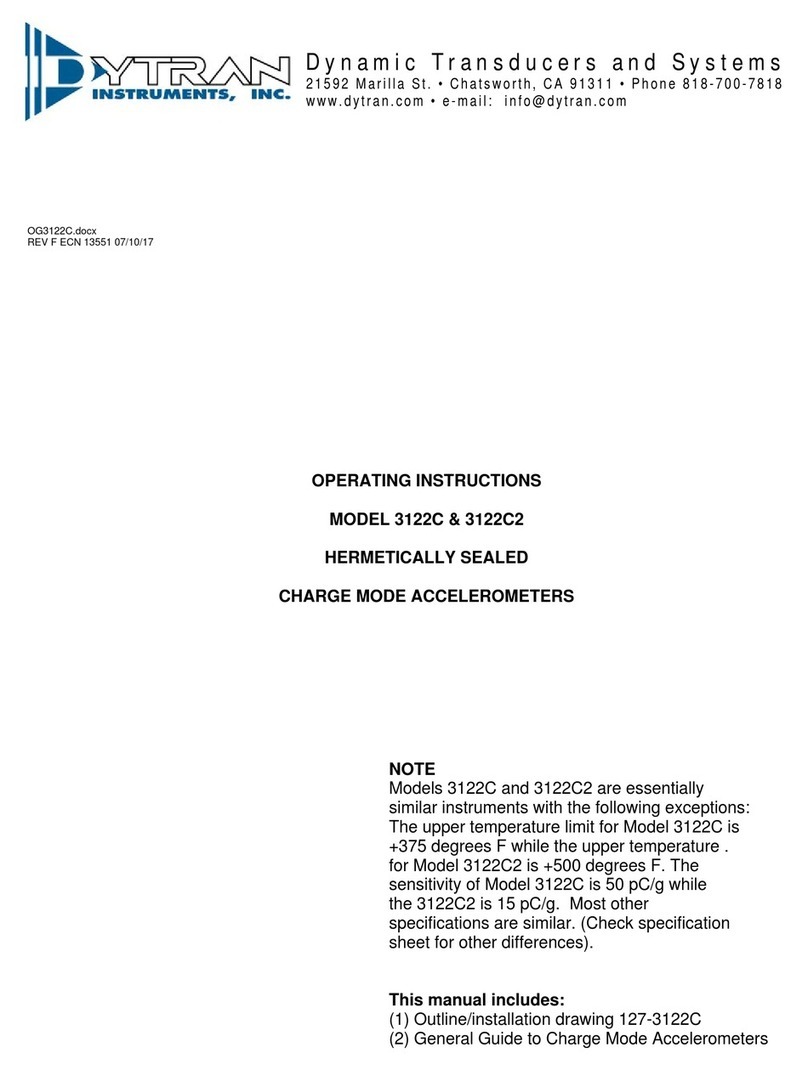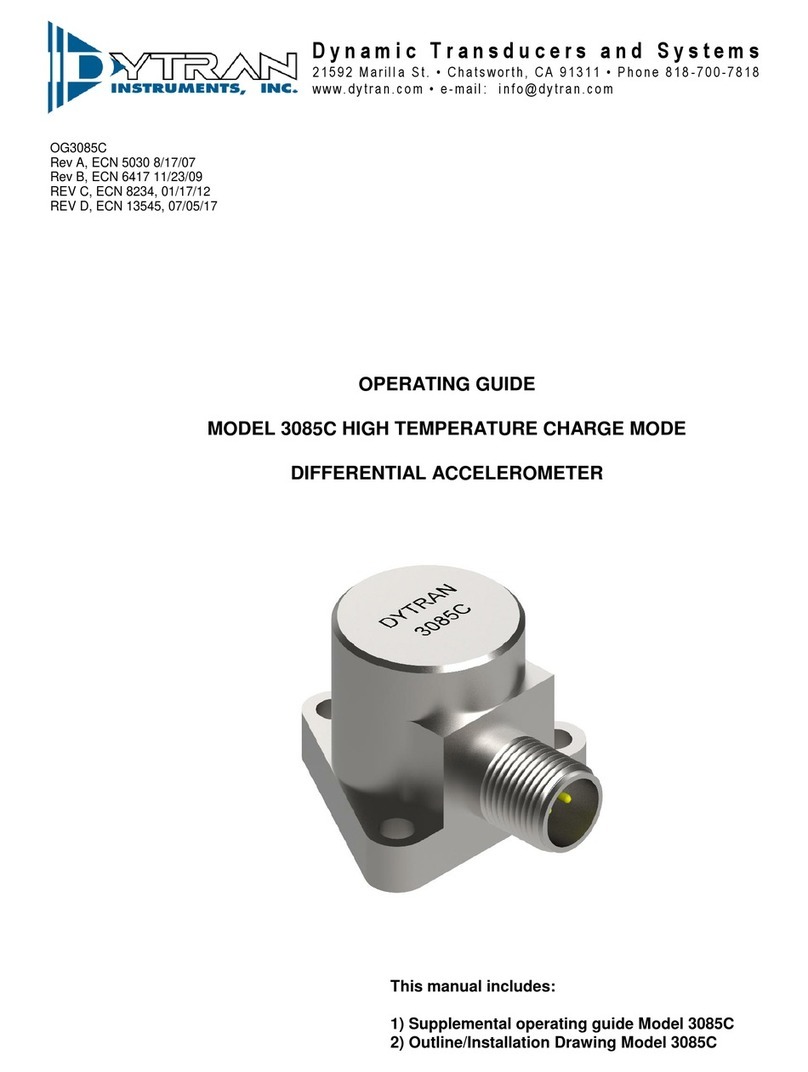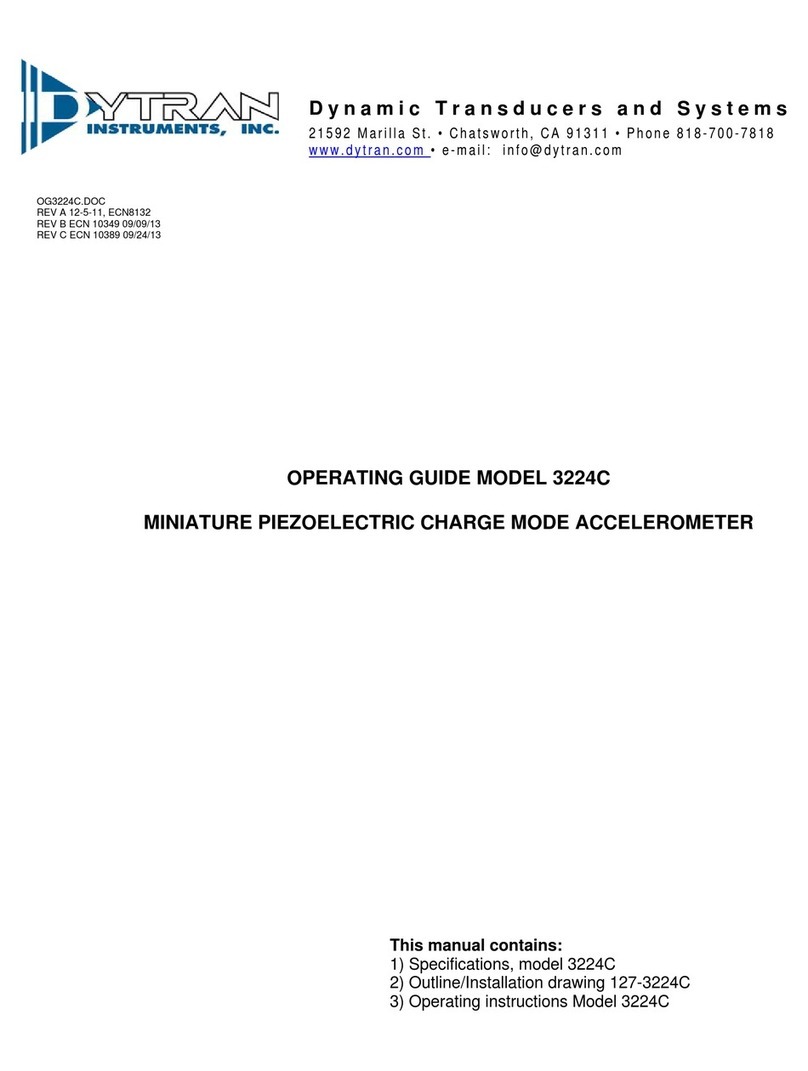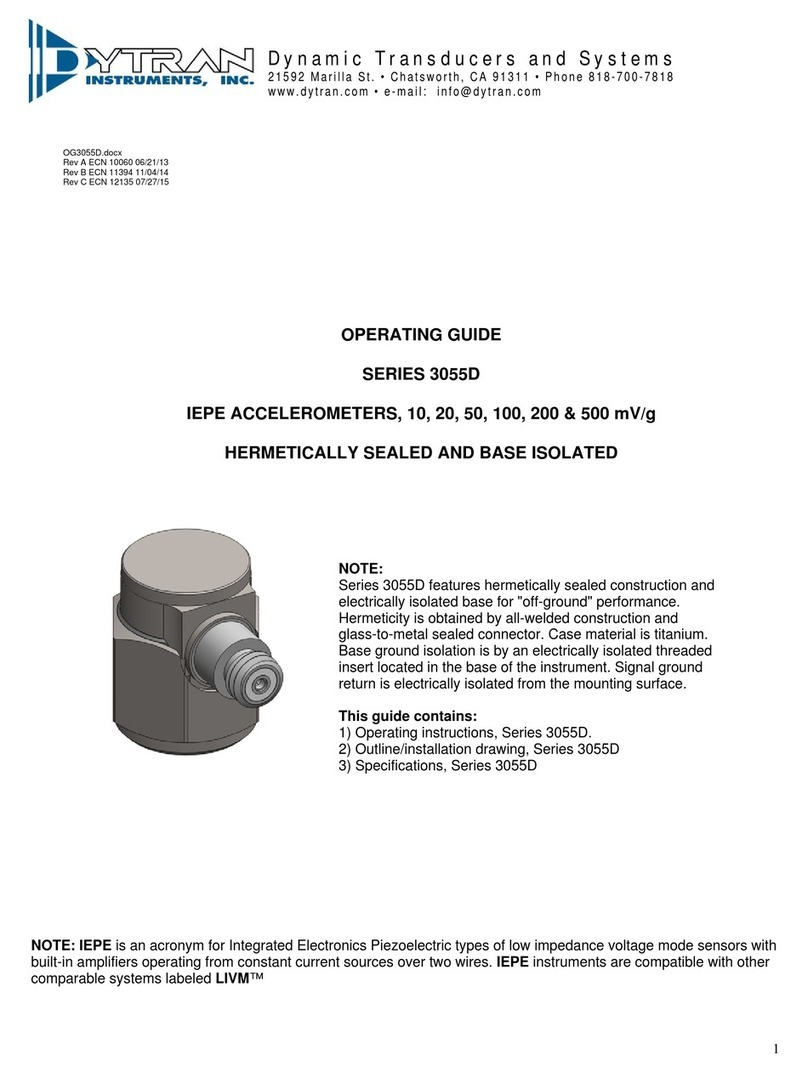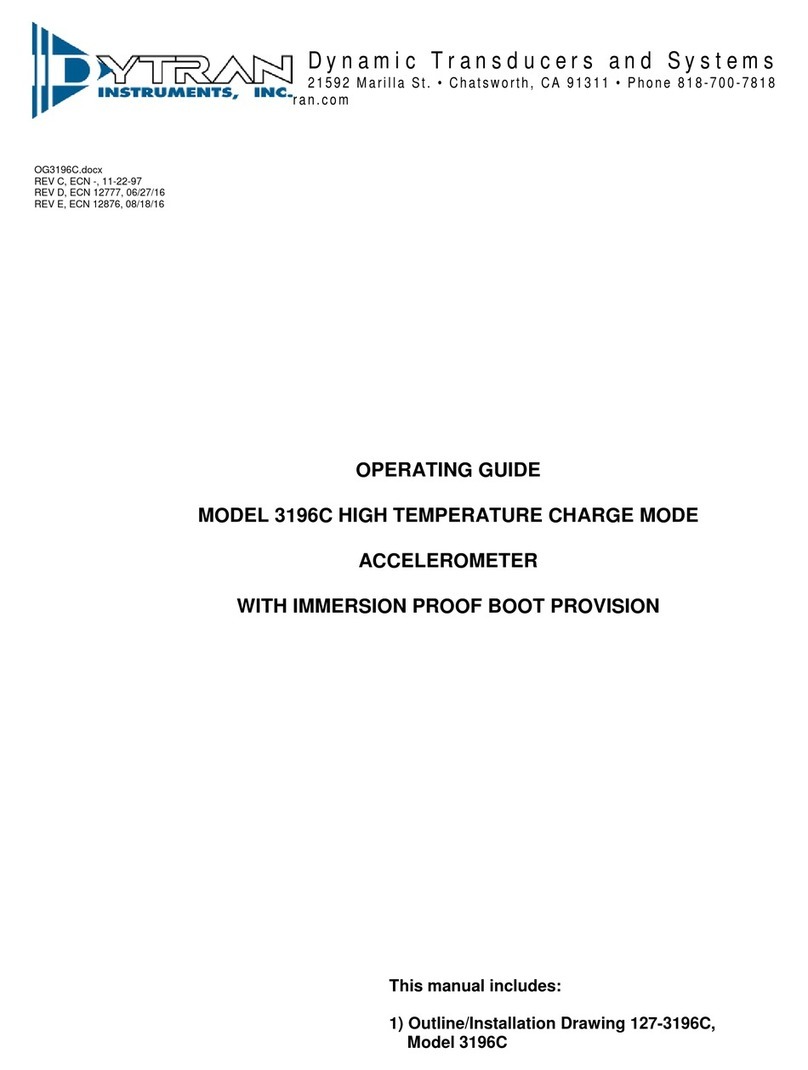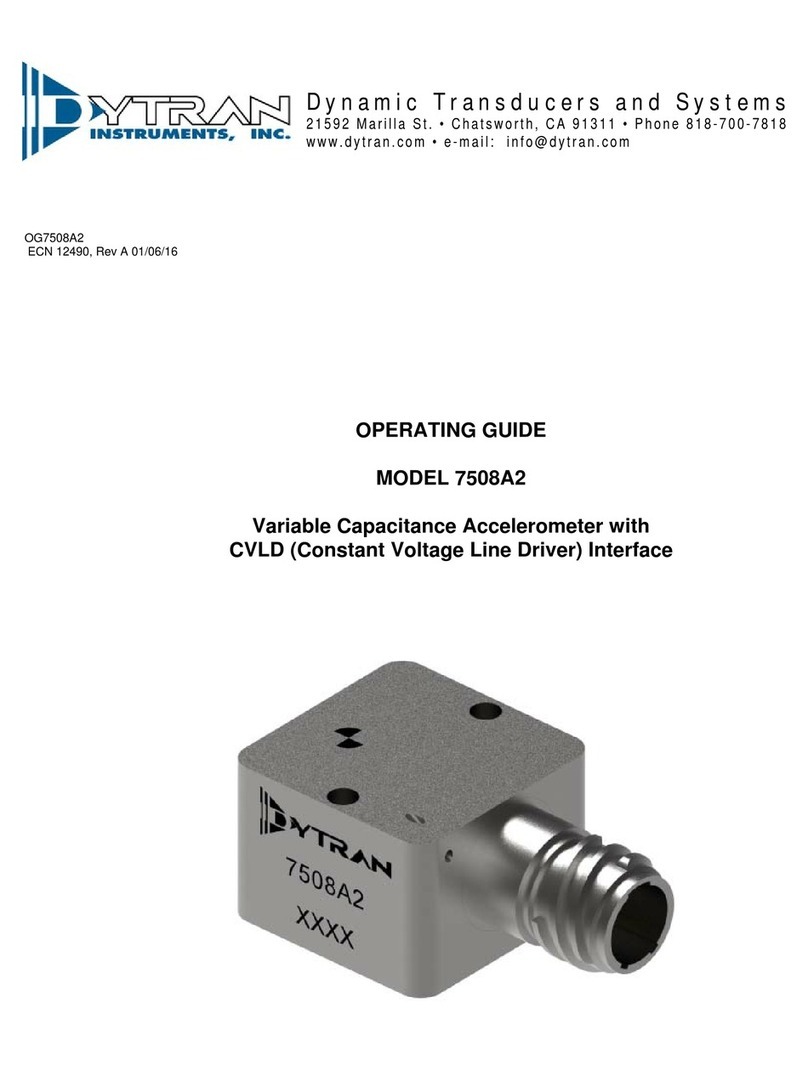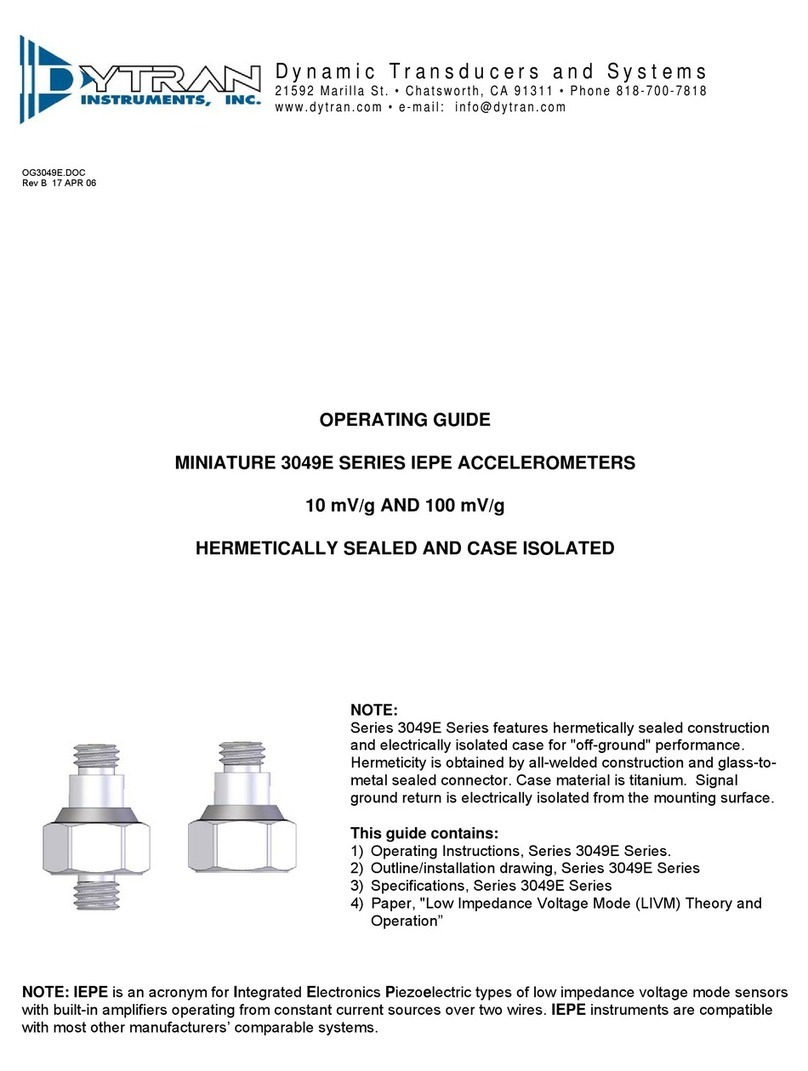
REV D, 02/04/15, ECN 11725 2
SUPPLEMENTAL OPERATING GUIDE
MODEL 3088C HIGH TEMPERATURE CHARGE MODE ACCELEROMETER
INTRODUCTION
Model 3088C is a charge mode accelerometer
designed to measure vibration of surfaces at
temperatures up to 600°F. This accelerometer uses an
ultra stable piezoelectric crystal in its self-generating
seismic element.
Model 3088C may be used with various
charge amplifiers of the vibration type (as opposed to
the DC coupled electrostatic types.)
DESCRIPTION
Refer to Outline/Installation drawing 127-3088C.
Model 3088C is packaged in a hermetically
sealed stainless steel housing and features a
transverse mounted glass-to-metal sealed connector.
The unit is installed by use of a 10-32 mounting stud.
INSTALLATION
To install Model 3088C, is necessary to
prepare (or find) a flat mounting area of approximately
0.5 inch diameter. Ideally, the mounting surface should
be flat to .001 in. TIR. The flat mounting surface
ensures intimate contact between accelerometer base
and mounting surface for best high frequency
transmissibility, thus accuracy.
At the center of the mounting area, drill and
tap a 10-32 mounting hole. Clean the area to remove
all traces of machining chips, burrs, etc.
Next, thread the Mod. 6200 mounting stud into
the base of the 3088C. The stud should enter easily
and thread in up to the raised collar of the stud by
hand. This collar prevents the stud from bottoming
inside the tapped hole in the 3088C where it could
possibly cause stresses in the base structure which
could, in turn, cause anomalous behavior of the
accelerometer at higher frequencies.
After seating the stud, spread a light coating of
silicone grease, or other lubricant, on either of the
mating surfaces and thread the accelerometer/stud
combination into the tapped hole by hand, until the
accelerometer base seats against the mounting
surface. Check to see that the mating surfaces are
meeting properly, i.e., that they are meeting flush and
that there is not an angle formed between the two
surfaces indicating that they are not co-planar. If this
condition is observed, torquing the accelerometer
down will strain the base causing possible poor
frequency response and even erroneous reference
sensitivity. Inspect the perpendicularity of the tapped
hole.
If the hand tight meeting between the two
surfaces is satisfactory, torque the 3088C to the
mating surface with 15 to 20 lb-inches of torque,
preferably measuring the torque with a torque wrench
torquing on the hex surface only.
Proper torque will ensure the best high
frequency performance from the instrument as well as
repeatability of sensitivity when mounting and
remounting. Excessive torque could damage the
ground isolation base.
Connect the cable (typically Models 6010AXX
or 6011AXX) to the accelerometer snugging up the
threaded lock ring tightly by hand.
MAINTENANCE AND REPAIR
Should you experience a problem with your
system, contact the Dytran factory for technical
assistance in analyzing and trouble shooting the
problem. If the product must be returned for evaluation
and/or repair, you will be given an RMA (returned
materials authorization) number and instructions for
returning the instrument to the factory. Do not return
the instrument without first obtaining this authorization
to return.












